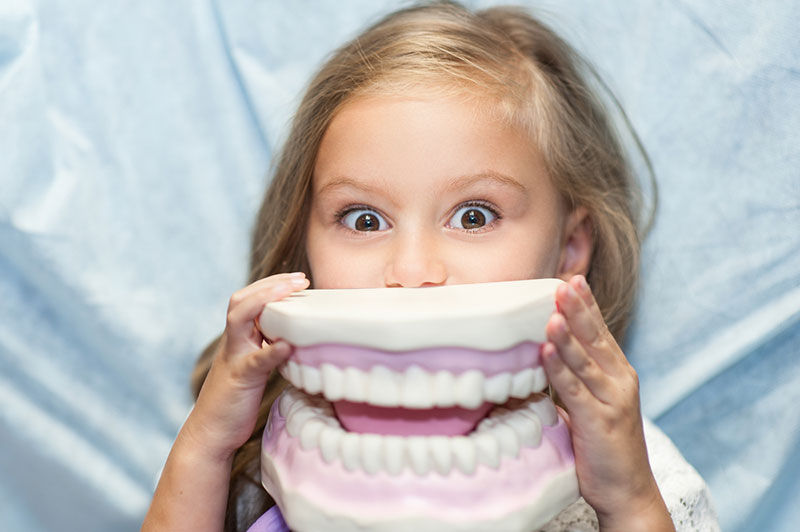
Starting at age 2 I take all of my kids to the pediatric dentist. X-rays are not something that any of my older children got when they were so young. But my youngest daughter is now 4 years old. Over the past 2 dental checkups, she has had 4 cavities. On her last appointment, our pediatric dentist took x-rays. I know she is concerned about the cavities, but why can’t she just fill the teeth without the x-rays. Naturally, I’m concerned about the radiation on a young child. Is it normal to do x-rays on young kids? I’m not really sure why my daughter is getting cavities. I don’t give my kids sugar at all and I make sure all of their teeth are brushed and flossed every day. I’m just concerned. What’s your take on the x-rays? Simone
Simone – Your concern about your children’s oral health and overall health is completely understandable. Your daughter’s pediatric dentist likely took x-rays for good reasons.
Reasons a Pediatric Dentist Might Take X-rays
The American Academy of Pediatric Dentistry (AAPD) doesn’t have set guidelines on age for dental x-rays. The Guideline on Prescribing Dental Radiographs for Infants, Children, Adolescents, and Persons with Special Health Care Needs states that diagnostic studies should be based on each patient’s needs, not on age alone.
The AAPD has recommendations for when dental x-rays for a child patient might be needed, regardless of age. The recommendations are based on certain conditions, some of which are listed below:
- A history of dental caries, or cavities – Posterior bitewing x-rays every 6 to 12 months if the teeth can’t be examined visually or with a probe.
- Tooth pain or trauma
- Family history of unusual dental issues
- Periodontal (gum) disease
- Loose teeth
- Unexplained bleeding or sensitivity
- Unusual characteristics of teeth, including abnormal eruption, growth/development, color, or other unusual factors
- Erosion
- Swelling
Some Interesting Facts
- There is minimal radiation exposure with dental x-rays.
- Every year, we are exposed to natural background radiation from air, wind, water, the ground, and other environmental factors. Millisievert (mSv) is the measurement used for radiation exposure.
- The mSv of natural background radiation is greater than the exposure from dental x-rays.
- Visit the Image Gently website for a comparison chart of natural background radiation and dental x-rays.
Safety First
Although dental x-rays are safe, extra care is taken with radiographs for children. For example:
- X-rays are not given as a routine, but only when necessary.
- Patients are protected with a thyroid shield and an apron to minimize exposure.
- Exposure parameters are set as slow as possible.
- X-ray exposure time is shortened because children have smaller teeth than adults.
Speak with your children’s pediatric dentist for additional information on why x-rays are needed for your daughter. Learn about the safety precautions that are taken to minimize your daughter’s exposure. Cooperate with the dentist to help identify underlying causes of the recurring cavities to help limit future cavities and improve your daughter’s oral health.
This post is sponsored by Naperville dentist Dr. Anthony LaVacca.
































